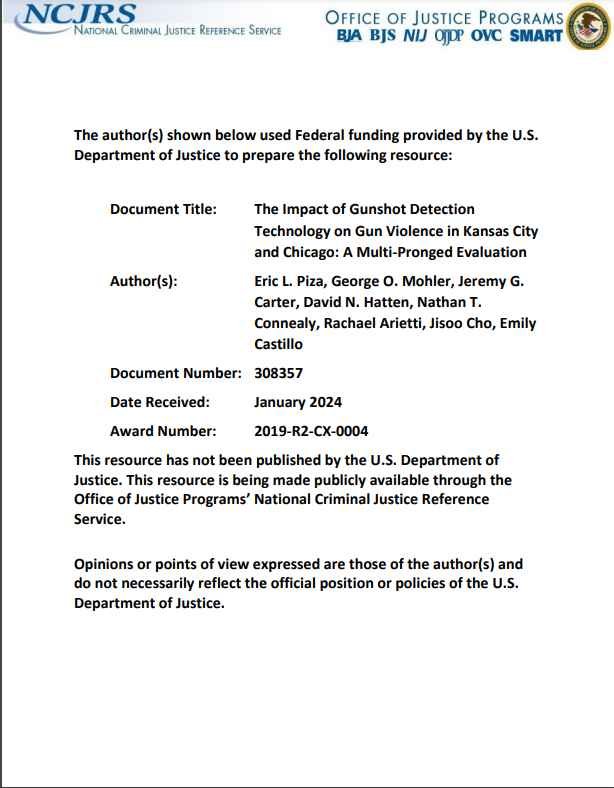By: Eric L. Piza; George O. Mohler; Jeremy G. Carter; David N. Hatten; Nathan T. Connealy; Rachael Arietti; Jisoo Cho; Emily Castillo
This report presents a study on the impact of gunshot detection technology (GDT) on gun violence. The authors leverage over a decade of data from Kansas City, MO, and Chicago, IL, to measure how GDT contributes to policing and public safety. Both cities installed ShotSpotter GDT systems in 2012, allowing for a long-term quasi-experiment of program effects. Kansas City Police Department installed GDT in October 2012, with the target area covering approximately 3.5 square miles of the city and remaining unchanged to this day. Chicago Police Department installed GDT over approximately 3.0 square miles of the city in August 2012 with the coverage area expanding to 22 additional police districts between February 2017 and May 2018. This expansion led to approximately 100 square miles being covered by GDT in Chicago. The GDT system in Kansas City detected 11,517 gunfire incidents through the end of the study period (12/31/2019). The GDT system in Chicago detected 85,572 gunfire incidents over the full installation period from 2/6/17 – 12/31/19.1 Based upon ShotSpotter’s reported annual subscription costs of between $65,000 and $90,000 per square mile2, GDT coverage costs between $227,500 and $315,000 per year in Kansas City and between $8.8M and $12.3M per year in Chicago.
Final report submitted to the National Institute of Justice, 2023. 114p.




